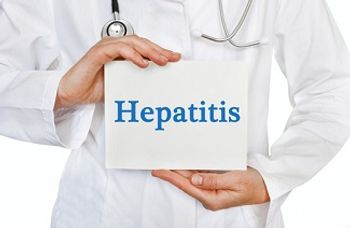
Rifapentine and Isoniazid for TB Prevention in Patients with HIV
Tuberculosis is a threat to people living with HIV and finding preventive therapies that don’t cause interactions with antiretrovirals is a priority.
Although tuberculosis is relatively uncommon in the United States, it remains a potent killer in less developed regions. In South Africa, TB is the number one cause of death and there is a disproportionate share of HIV-associated tuberculosis. People with HIV are more likely to progress from latent tuberculosis to active tuberculosis disease, making prevention of tuberculosis transmission a priority.
In 2018, the World Health Organization (WHO) recommended a 12-week regimen of 900 grams of rifapentine and 900 grams of isoniazid, taken once weekly, to prevent latent tuberculosis infection from turning into tuberculosis disease. Previously, 6 to 9 months of isoniazid was the norm, but research concluded that not enough patients were finishing the full medication course.
While adding rifapentine promised to increase adherence rates and effectively prevent tuberculosis disease, scientists were wary about prescribing the combination, known as 3HP, for people taking dolutegravir, which WHO recommended as the first-line HIV treatment for people initiating antiretroviral therapy (ART).
“[B]ased on a study conducted among healthy HIV-negative volunteers, there were concerns that 3HP [rifapentine/isoniazid] and dolutegravir were not tolerable when given together,” Kelly Dooley, MD, PhD, associate professor of medicine, pharmacology & molecular sciences at Johns Hopkins University School of Medicine’s Center for Tuberculosis Research, told Contagion®.
“Moreover, since rifapentine is a strong inducer of metabolizing enzymes, we were not sure if 3HP would reduce dolutegravir concentrations significantly enough that we would need to adjust the dolutegravir dose.”
Dooley, along with colleagues at the University of California San Francisco and South Africa, launched a study designed to examine rifapentine and isoniazid’s safety and efficacy in an HIV-positive population taking dolutegravir. The study, which was published in
During the study, there were 3 grade 3 adverse events, including 2 episodes of elevated creatinine possibly associated with ART and 1 episode of hypertension deemed unlikely to be caused by ART.
The participants’ mean trough concentrations of dolutegravir were sufficient throughout the study, and they stayed virally suppressed, leading the investigators to declare rifapentine and isoniazid safe and effective for the prevention of tuberculosis disease in HIV-positive people who take the standard 50 mg daily dose of dolutegravir.
The authors noted that in a prior study in which rifapentine and isoniazid were given to HIV-negative subjects, 2 out of 4 subjects experienced adverse events such as fever, elevated liver enzymes, and had high C-reactive protein and other cytokine levels.
In the more recent study, by contrast, C-reactive protein rates went down over time. The authors theorize that higher levels of inflammation in people living with HIV may tamp down immune responses such that rifapentine and isoniazid pose less of a threat than they do to those with more reactive immune systems; however, the reasons are not fully known.
Next up for the investigative team is a scaled-up study enrolling people living with HIV who have not yet begun ART.
“We will explore the effects of 3HP on HIV treatment outcomes to confirm that 3HP and ART can be started simultaneously and that doing so is safe and effective,” Dooley told Contagion®.
“More importantly, our trial provided the safety and dosing information that was needed to support rollout of 3HP among [people living with HIV] taking [dolutegravir].”
Newsletter
Stay ahead of emerging infectious disease threats with expert insights and breaking research. Subscribe now to get updates delivered straight to your inbox.

















































































































































































































































































